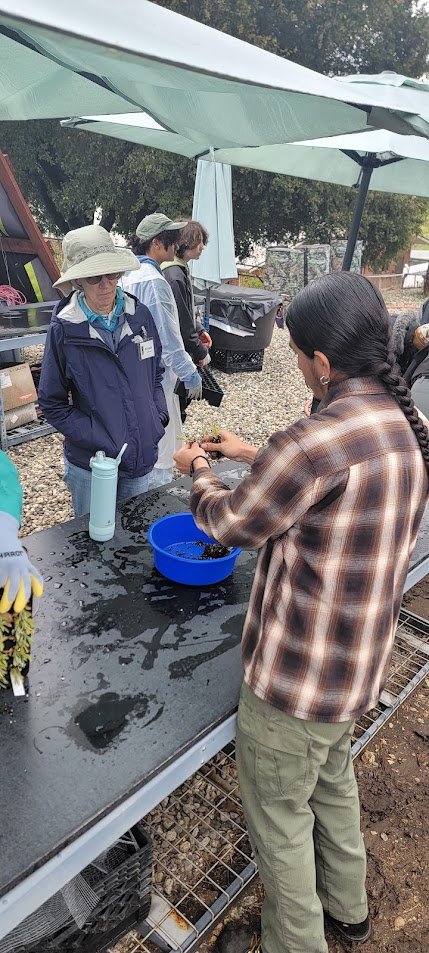Exploring the SMMNRA: California Naturalists Visit the Wallis Annenberg Wildlife Crossing
Wallis Annenberg Wildlife Crossing:
SAMO Fund hosted the California Naturalists at the Wallis Annenberg Wildlife Crossing’s nursery, constructed to grow the plants that will be planted atop the crossing to provide animal habitat
Nursery Managers Julia Samaniego, Jose Campos, and Oxnard Young Ecologist Assistant Lead, Desserie (Dez) Vasquez explained the process of growing native plants such as California lilacs, fuchsias, three types of native buckwheat, native sages, milkweed, scarlet bugler, foothill penstemon, stinging nettle and more. Everything from the seeds to the soil to the mulch and fertilizer are sourced locally and organically and plants are not treated with any chemical pesticides.
The California Naturalists and participants got to exercise their green thumb and replant some new blooms into fresh soil, helping them grow bigger and stronger.
At the Wallis Annenberg Wildlife Crossing site participants learned of the process to construct the world’s largest animal crossing.
The crossing aims to reduce wildlife death and allow for the movement of animals and the exchange of genetic material. Over 300,000 cars use the US-101 daily; the crossing will be designed in such a way that animals who use it wouldn’t be able to distinguish the difference between the mountains and the bridge.
The Wallis Annenberg Wildlife Crossing and the Project Nursery
Everything grown at this nursery site is geared to making the crossing seamless with the surrounding mountains. The intention is that eventually the crossing will need minimal to no maintenance, and be left solely for wildlife to use, and maybe make a home of.
California Naturalists are enrolled with SAMO Fund to receive their certification as California Environmental Stewards. They undertake a series of programs and complete coursework to earn their certification.









